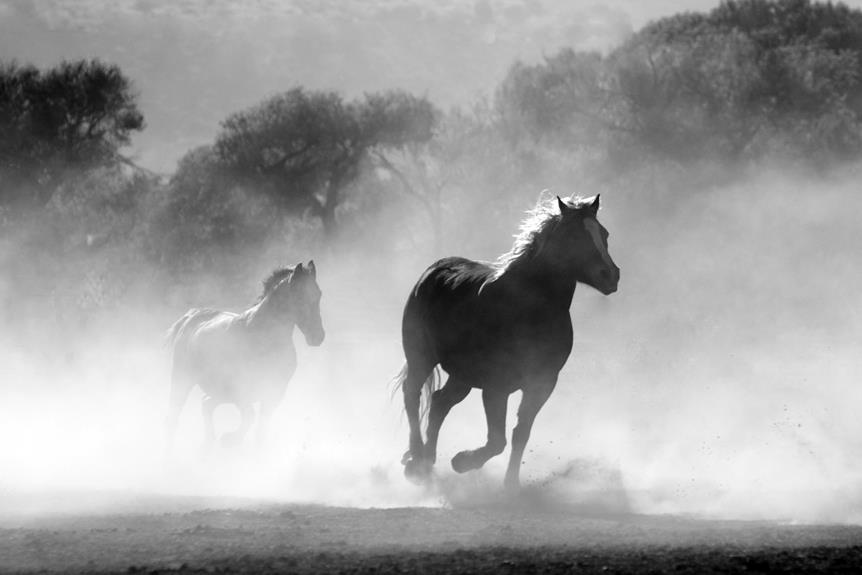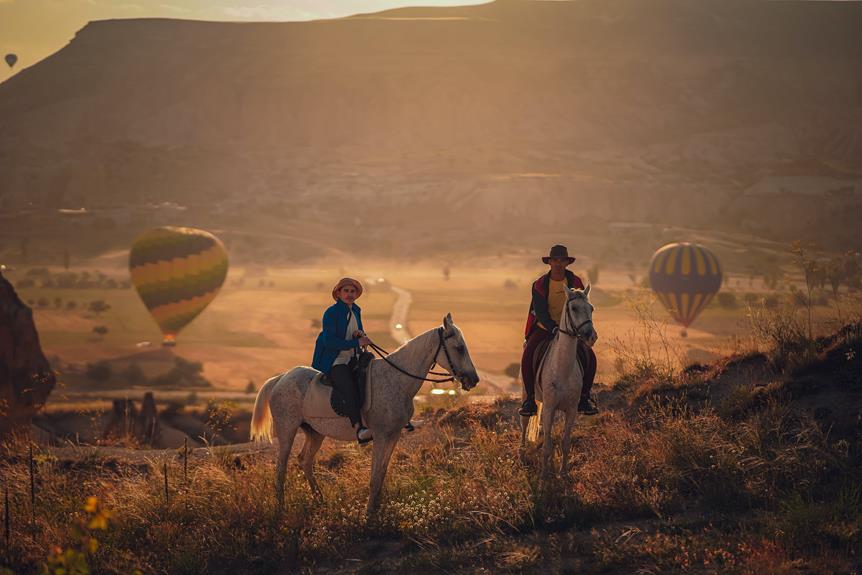Marvel at the magnificent mare, the female horse that holds a vital role in the world of equine.
But what exactly is a female horse called? The answer is simple yet intriguing.
As you delve into the depths of this fascinating topic, you will discover not only the name but also the unique characteristics and significance of mares.
So, saddle up and embark on a journey to unravel the secrets of these remarkable creatures.
Key Takeaways
- A female horse is commonly called a mare.
- Mares have distinct physical characteristics that differentiate them from male horses.
- Mares have a different reproductive cycle and are carefully selected for breeding based on lineage and physical attributes.
- Mares play a crucial role in horse breeding as they give birth to foals and require proper care during pregnancy.
Female Horse Terms
Female horse terms encompass the various names and terminologies used to describe and refer to mares, who play a crucial role in horse breeding.
A female horse is commonly called a mare. The term 'mare' is used to refer to female horses of any age, from a young female horse called a filly to an adult female horse. Mares have distinct physical characteristics that set them apart from male horses.
They've a different reproductive cycle compared to other animals. Mares can give birth to foals, which are their offspring. Breeding mares are carefully selected based on their lineage and physical attributes to ensure the continuation of desirable traits in the offspring. Proper care and management are essential for breeding mares during pregnancy to ensure the health of both the mare and the foal.
Understanding the different terms and names associated with female horses is important in the world of horse breeding and provides a foundation for further knowledge about these remarkable animals.
Common Doubts
If you're new to the world of horse breeding, you may have some common doubts that arise when it comes to understanding female horse terms and their role in the process. One of the main doubts people have is what a female horse is called. Well, the answer to that's a 'mare'.
Female horses, or mares, play a crucial role in horse breeding as they give birth to foals. Mares have their own reproductive cycles, which are different from those of other animals. The term 'mare' is used to refer to female horses of any age.
Mares have distinct physical characteristics compared to male horses, with a smaller build and lighter body weight. They're carefully selected based on their lineage and physical attributes for breeding, and require proper care and management during pregnancy.
Mares are essential in horse breeding programs, as their reproductive capabilities contribute to the continuation of horse breeds and the inheritance of desirable traits in their offspring.
Differences Between a Mare and Filly
Mares and fillies can be distinguished by their age and reproductive capabilities. A mare is a mature female horse, typically four years or older, while a filly is a young female horse under the age of four. Mares have fully developed reproductive capabilities and can give birth to foals, while fillies aren't yet mature enough for breeding. This is because fillies are younger and need time to grow and develop before they can reproduce.
Mares may exhibit signs of being in heat, such as frequent urination and flirting with stallions, while fillies aren't yet reproductively active. In terms of physical appearance, mares tend to have a more substantial build and are heavier than fillies. Fillies, on the other hand, have a lighter and more agile physique.
Due to their age and level of maturity, fillies are often trained and prepared for future equestrian activities, while mares are commonly used for breeding or various equine disciplines. So, the main differences between a mare and a filly are their age and reproductive capabilities.
Differences Between a Mare and Broodmare
When it comes to distinguishing between a mare and a broodmare, there are some key differences to consider. Here are three important distinctions to keep in mind:
- A mare is a female horse of any age, while a broodmare specifically refers to a female horse used for breeding purposes. The term 'mare' is used to refer to female horses in general, whereas 'broodmare' specifically indicates a female horse involved in the breeding process.
- Mares may or may not have been used for breeding, while broodmares are specifically selected and managed for their reproductive capabilities. Broodmares are carefully chosen based on their lineage and physical attributes to produce desirable offspring, while mares may not undergo the same selective process.
- While mares can be used for various equestrian disciplines, broodmares are primarily employed for their role in producing and raising foals. Broodmares are dedicated to breeding and raising young horses, while mares can have a range of purposes beyond breeding.
Understanding the differences between a mare and a broodmare is important in the world of horse breeding. Whether you're considering owning a female horse or are involved in the breeding industry, knowing these terms and their distinctions will help you navigate the equestrian world more knowledgeably.
Differences Between a Mare and Stallion
The most significant difference between a mare and a stallion is their gender. As you already know, a mare is a female horse, while a stallion is a male horse. Besides their obvious distinction in terms of reproductive organs, there are other notable differences between these two equine counterparts.
Mares play a crucial role in horse breeding as they're responsible for producing foals. They've specific reproductive cycles that enable them to conceive and give birth. In contrast, stallions are used for breeding purposes and are responsible for impregnating mares.
They exhibit different behaviors and physical characteristics compared to mares. For example, stallions often display more aggressive and dominant behavior, while mares tend to be more nurturing and protective. Additionally, mares can be identified by their udder, which is absent in stallions.
It's important to note that the term 'mare' is used to refer to female horses of any age, while fillies are specifically female horses younger than four years old. When selecting mares for breeding purposes, lineage and physical attributes are carefully considered to ensure the continuation of desired horse breeds.
Frequently Asked Questions
What Is the Feminine Name for Horse?
The feminine name for a horse is mare. Take good care of your mare by grooming her regularly, training her using effective techniques, and addressing any specific health issues that may arise.
What Is the Feminine Word for Horse?
In the animal kingdom, gender plays a crucial role in breeding and reproduction. Understanding the differences between male and female species is essential. So, what is the feminine word for horse? It's 'mare.'
What Is a Female Horse That Has Not Given Birth?
In the horse world, a female horse that hasn't given birth is called a maiden mare. These mares have unique considerations regarding hormones, breeding, health, training, performance, nutrition, and the benefits of spaying.
What Are Baby Horses Called?
Baby horses, known as foals, stay with their mothers for about 6 months to a year. They go through stages like being a weanling or yearling. Male foals are called colts, while female foals are called fillies.
Conclusion
So now you know that a female horse is called a mare.
Mares are essential in horse breeding and can give birth to foals. They have unique reproductive cycles and physical characteristics compared to male horses.
Mares can be trained for various equestrian disciplines and play a crucial role in horse breeding programs.
Their reproductive capabilities contribute to the continuation of horse breeds.



0 Comments